
Published: Last Updated:
Readtime: 9 min
Every product is carefully selected by our editors and experts. If you buy from a link, we may earn a commission. Learn more. For more information on how we test products, click here.
If you’re reading this DJI Osmo 360 review, then you likely sit in one of two camps. You love 360 cameras like the Insta360 X5, GoPro Max and the Kandao Qoocam 3 Ultra, or you’ve never used one before.
The good news is that DJI usually does a great job of catering to both parties, but the introduction of a 360 camera could be the biggest challenge they’ve faced yet. The brand’s devices are traditionally simple to use, but 360 cameras are not. While they film the whole world at once (hence the name), the post-production process for key-framing the clips can be complex. This is a problem that they believe they’ve fixed with a new DJI Studio desktop application.
Now fashionably late to the party, DJI reckons they’ve learned from their competitors and created the best 360 camera on the market. Have they done it? Let’s find out.
| High point | Low point |
|---|---|
| Native 8K/50fps 360 video and 120 MP stills from a 1-inch sensor with HDR, RockSteady 3.0 delivers smooth, natural stabilised footage, 100 min battery life at 8K/30fps. New DJI Studio app simplifies 360 edits with auto tracking. | 360 video workflow still needs key-framing, image quality advantage over Insta360 X5 is marginal in most modes, and no removable microSD slot means files must be offloaded when the internal drive fills. |
DJI Osmo 360 Specifications
| Feature | DJI Osmo 360 Specification |
|---|---|
| Sensor | 1-inch square HDR CMOS, 2.4 µm pixels, 13.5-stop dynamic range, f/1.9 aperture |
| Max 360-video | Native 8 K / 50 fps; records 8 K / 30 fps for 100 min |
| High-speed video | 4 K / 100 fps (4× slow-mo) |
| Still-photo resolution | 120 MP 360° images |
| Single-lens mode | 5 K / 60 fps, 155° FOV; Boost Video 4 K / 120 fps, 170° FOV |
| Internal storage | 105 GB built-in memory (no card required) |
| Battery life | 100 min at 8 K / 30 fps; 180 min with Battery Extension Rod |
| Fast-charge rate | 50 % in 12 minutes |
| Operating temperature | Functional down to –20 °C |
| Weight | 183 g |
| Mount system | Magnetic quick-release plus standard ¼-inch thread |
| Audio | OsmoAudio Direct connects two DJI Mic transmitters without a receiver |
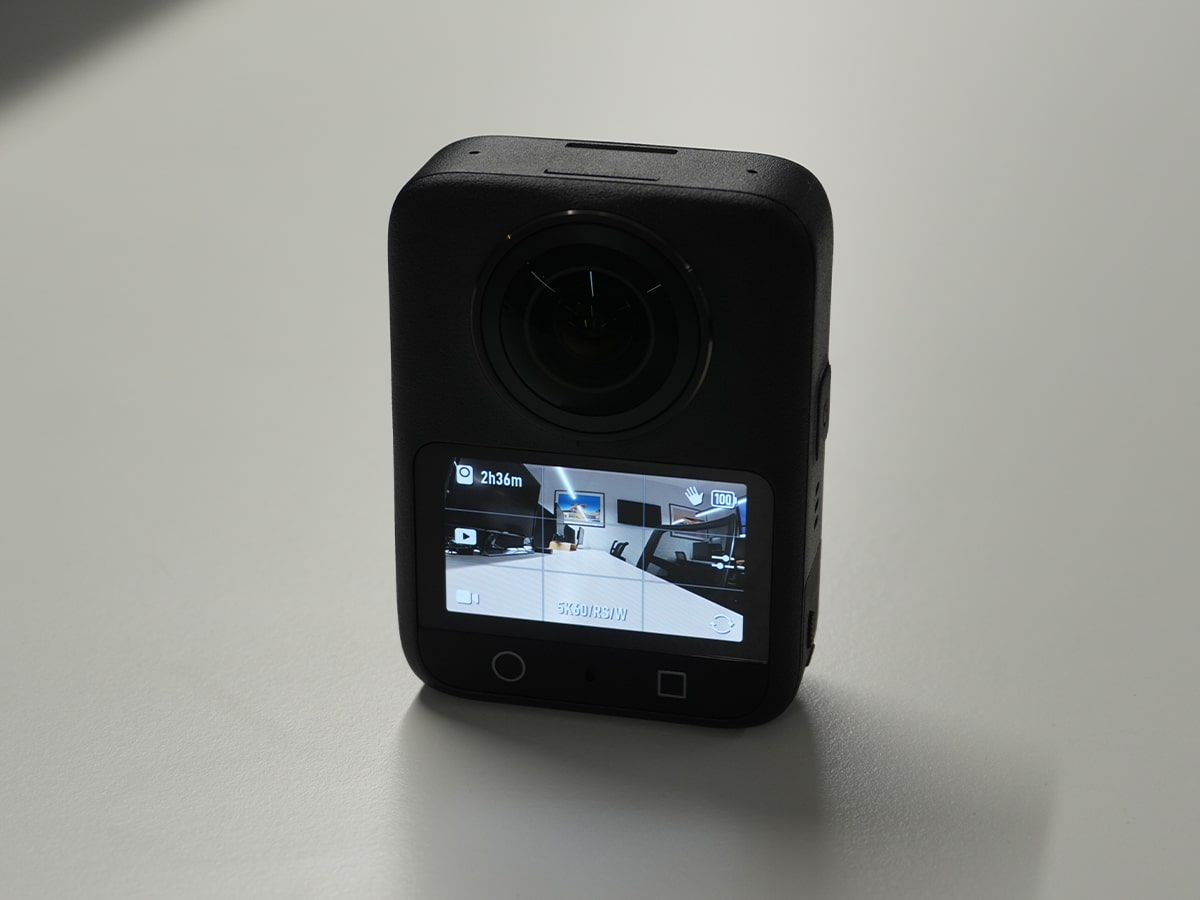
How Much is the DJI Osmo 360?
The DJI Osmo 360 is priced from AUD$759 (Standard Combo), making it significantly cheaper than its closest competitor, the Insta360 X5 (AUD$929).
Here’s what you get for your money:
- Osmo 360 Standard Combo – AUD$759
- Osmo 360
- Osmo Action Extreme Battery Plus
- Osmo 360 Protective Pouch
- Osmo Lens
- Osmo Lens Cleaning Cloth
- USB-C to USB-C PD Cable (USB 3.1)
- Osmo 360 Rubber Lens Protector
- Osmo 360 Adventure Combo – AUD$989
- Osmo 360
- Osmo Action Extreme Battery Plus
- Osmo 360 Protective Pouch
- Osmo Lens Cleaning Cloth
- USB-C to USB-C PD Cable
- Osmo 360 Rubber Lens Protector
- Osmo Adjustable Quick Release Adapter Mount
- Osmo 1.2m Invisible Selfie Stick
- Osmo Action Multifunctional Battery Case 2
You’ll also be able to purchase a range of DJI accessories from launch, including:
- Osmo 360 Battery Extension Rod
- Osmo Motorcycle Heavy-Duty Mount
- Osmo Adjustable Quick-Release Adapter Mount
- Osmo 360 Transparent Lens Protectors
- Osmo Hanging Neck Mount Max
- Osmo Third-Person Helmet Mount Kit
- Osmo 70cm Invisible Selfie Stick
- Osmo 1m High-Strength Carbon Fibre Invisible Selfie Stick
- Osmo 1.2m Invisible Selfie Stick Kit
- Osmo 1.6m Tripod Selfie Stick
- Osmo 2.5m Extended Carbon Fibre Selfie Stick
- Osmo Dual Heavy-Duty Clamp
- Osmo Vortex Rotating Handle
- Osmo 360 Carrying Bag
- Osmo Bike Rear Mount Kit
Like all handheld tech products (and even cars) we recommend the DJI Care Refresh program, which is available for Osmo 360. If an accident occurs, damage is covered by the replacement service, including natural wear, collisions, and water damage. You can also pay a small fee to have a damaged product replaced, and the one-year plan includes up to two replacements and four replacements in two years.
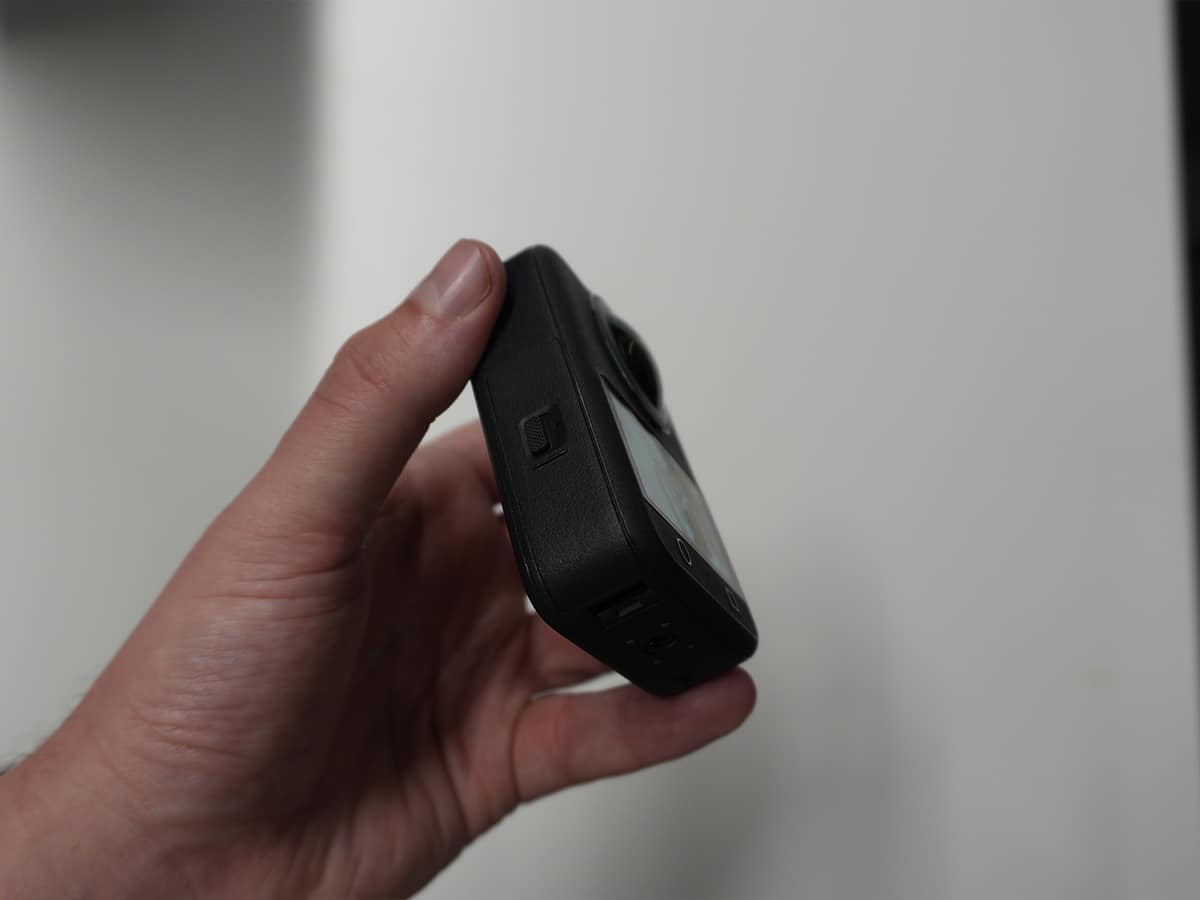
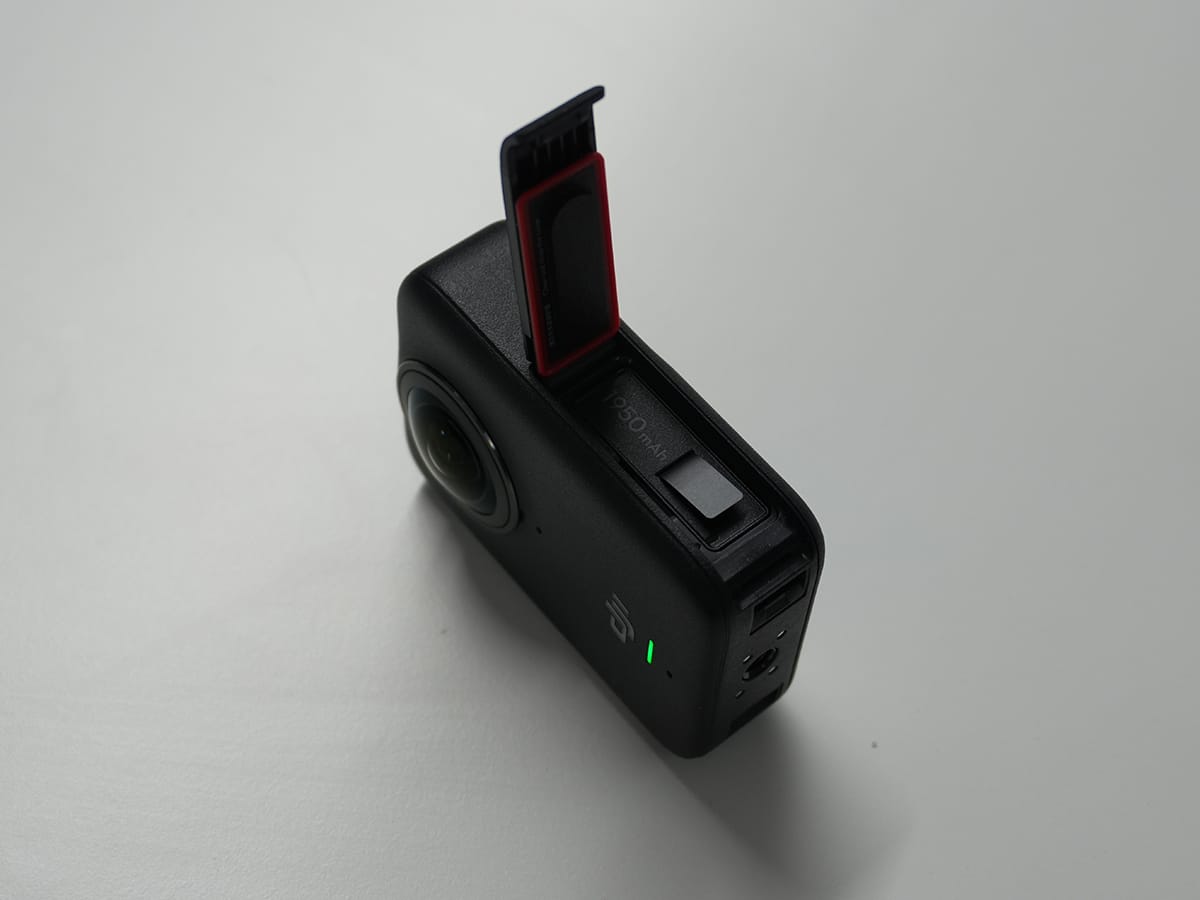
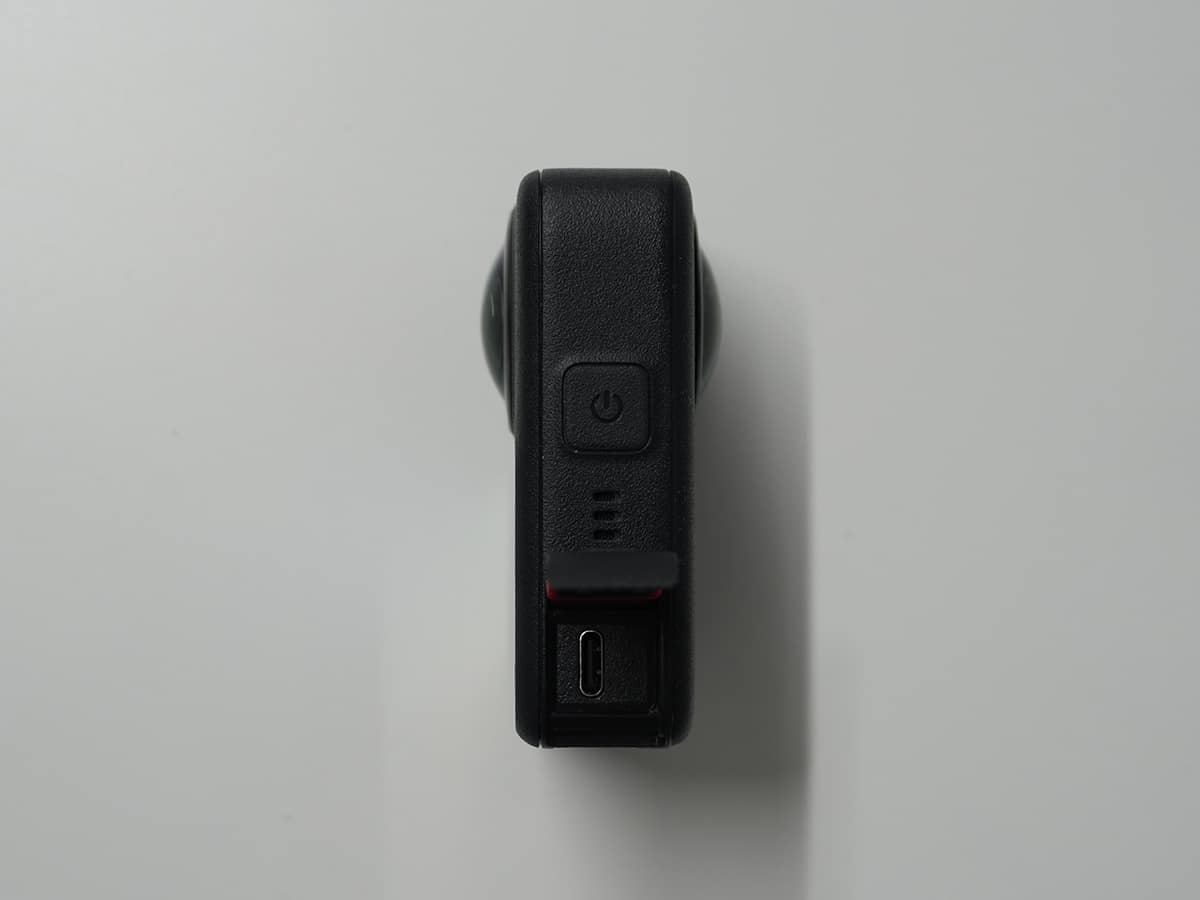
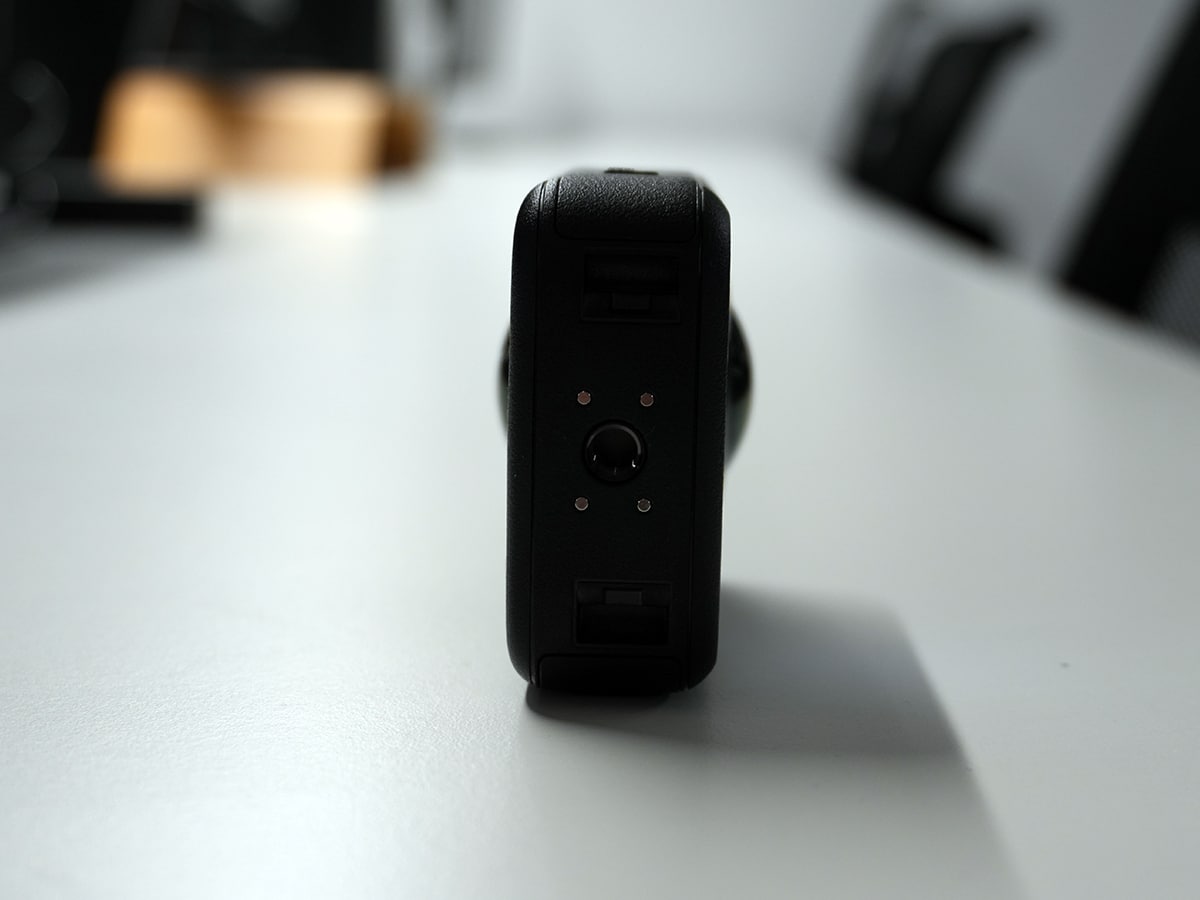
How Does the DJI Osmo 360 Feel?
The DJI Osmo 360 feels very solid in hand. They’ve chosen to steer away from the thin, rectangular form factor of the Insta360 X5, but I don’t think it’s a problem, as it’s still fairly lightweight at 183 grams. Importantly, I had no problem holding it up on the end of a 2.5-metre-long pole.
Looking around the camera, you’ll find a covered USB-C (3.1) port in the bottom corner of the camera for charging and file transfers, an on/off/mode button on the left side of the camera, a standard screw-in fitting on the base, a DJI clip-in base that works with the same connections as the DJI Action 5 Pro, and a battery tray with a cover that houses a 1,950mAh battery.
Battery life is marked at 100 minutes in 8K/30fps, but we need to do further testing on this in different modes and with different settings.
Below the screen are two buttons, one for start/stop recording and another for switching the modes from video to photo, etc. Of course, when the camera is mounted more than 2.5 metres in the air, you’ll want to start recording using the included gesture controls. Hold the palm of your hand in front of the camera, and it will start recording with a three-second countdown. Alternatively, use the voice commands.
What is the Video Quality Like on the DJI Osmo 360?
Starting with the hardware, the DJI Osmo 360 uses a 1-inch 360° square, HDR imaging sensor, with a maximum video resolution of 8K/50fps.
To put this to the test, I chose to shoot the test video above in low-light because 360 cameras usually struggle the most in these conditions. I was happy to see that it did very well in the Sydney afternoon dusk, with natural levels of sharpness, colour, and only a small amount of noise.
You’ll also notice how smooth the image is with DJI’s RockSteady 3.0, reducing shakes while retaining the dynamic impact of motion while walking around.
If you shoot a lot of low-light video, the Osmo 360 is still going to be limited by its hardware in darker conditions than those I tested above, but I can finally say that both the dual 1/1.28-inch sensors in the Insta360 X5 and the 1-inch 360° square in the DJI Osmo 360 do a fine job with only small amounts of noise.
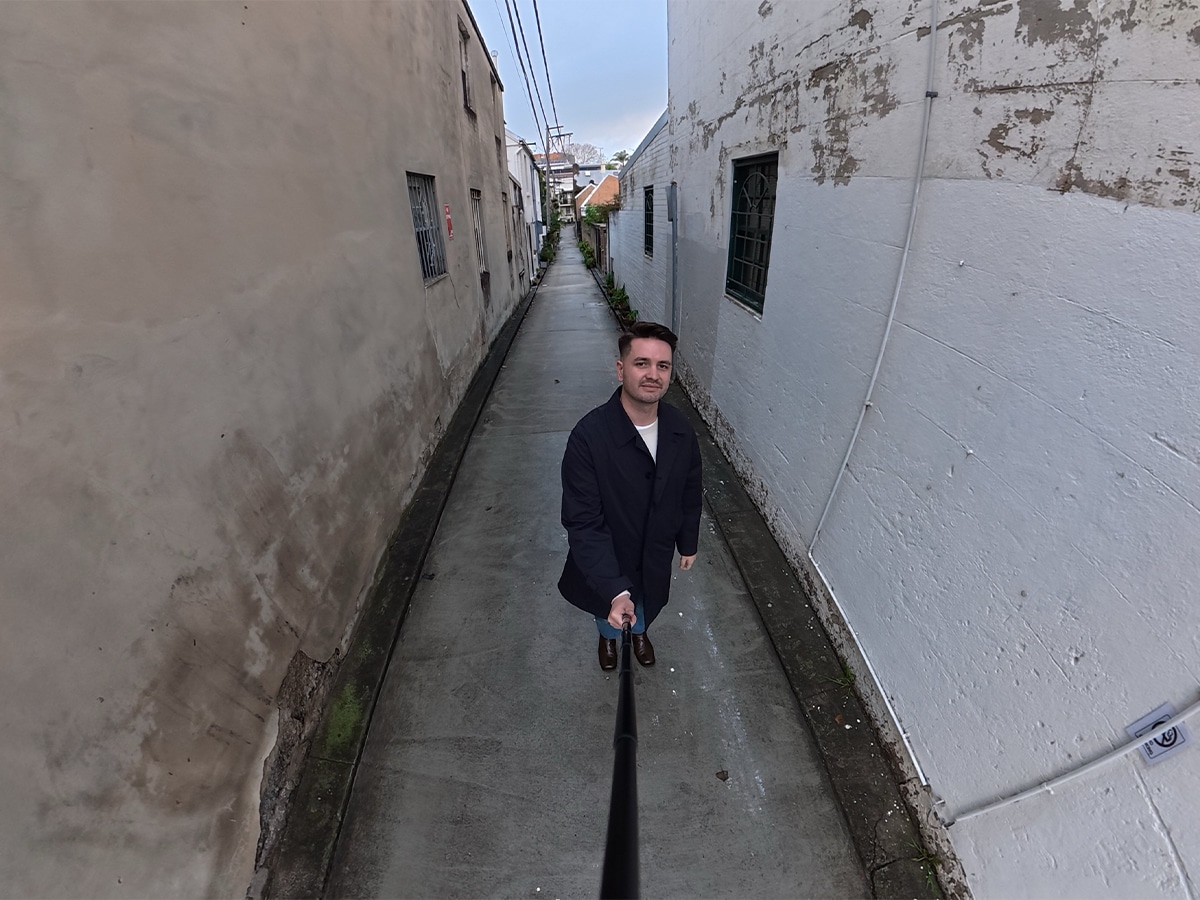
I’m a bit of a framerate nerd, so I loved the ability to shoot in 4K at 100fps 360° video. When I wanted to slow things down even further, the 4x slow motion mode takes care of things.
I still have further testing to do with the DJI Osmo 360, but the differences between it and the Insta360 X5 are minimal at first assessment. Both cameras have 13.5 stops of dynamic range, the DJI Osmo 360 has an aperture of f/1.9, and the Insta360 X5 makes do with f/2.0. However, one main advantage of the DJI is its native video resolution capabilities, where the 8K/50fps 360° video outdoes the 8K/30fps 360° video in the X5. Still, most people will only shoot at 30fps, so the benefits are negligible.
When you’re willing to sacrifice a little on the framerate end and turn it down from 50fps to 30fps, the native 8K/30fps 360° panoramic video has large 2.4μm pixels, which matches the Insta360 X5. However, my early assessments show that the DJI has a more natural feel to the image, whereas the X5 is overly sharpened.
I still have more testing to do, but I was really impressed by the 120 MP 360° photo quality. You can see from my test image above just how much you can fit in the shot when using a 360 camera, and it would be perfect for group photos and events.
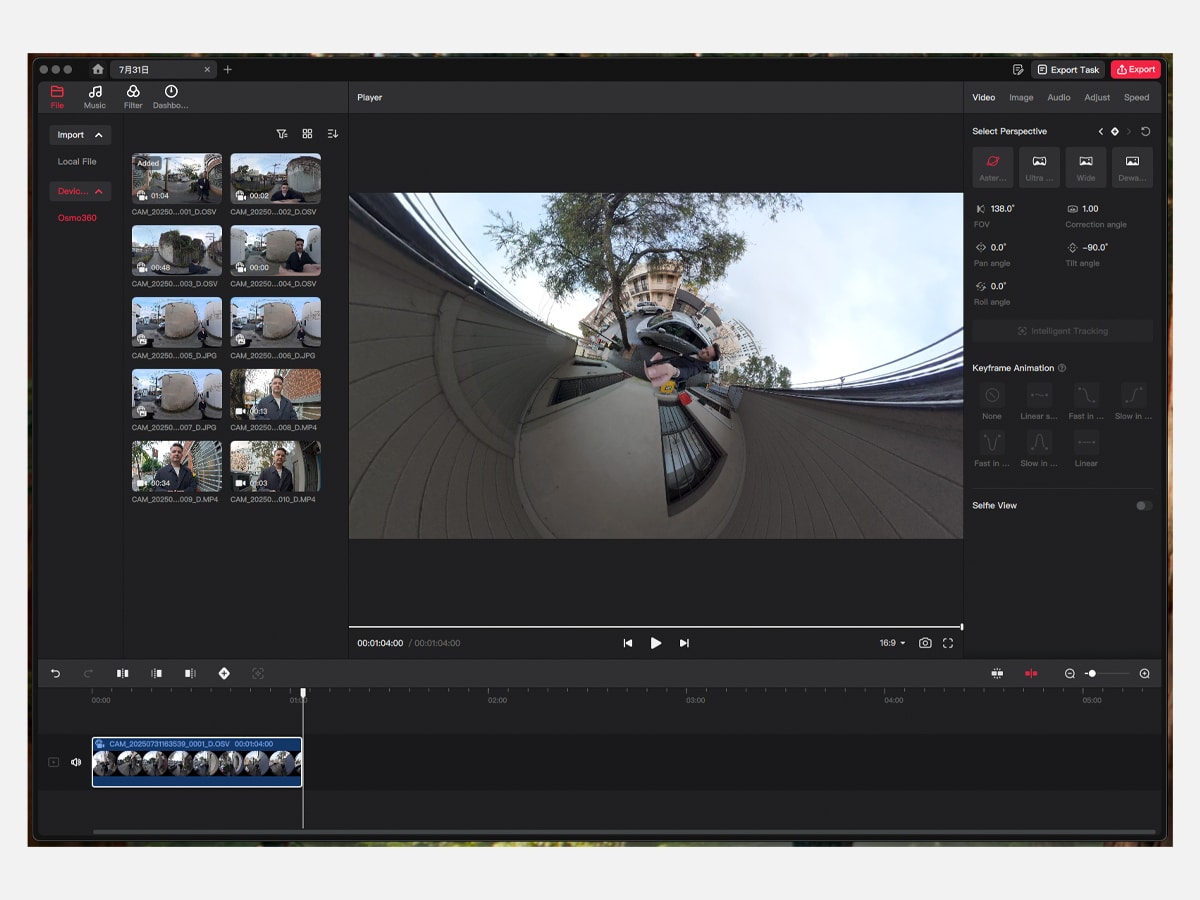
What Software Does the DJI Osmo 360 Use?
While you can connect to the DJI Mimo app like other DJI products, the DJI Osmo 360 takes advantage of the new DJI Studio desktop application (Windows and Mac), which is similar to CapCut but built for DJI devices, especially the 360 camera.
Here, you can take your 360 video and edit it down using “key framing” to focus on the object of your choice. If that sounds too hard, automatic object tracking is available, where you draw a box around the object and the software tracks it for you. I used it to make the test video above.
Once you have your frame set, you can choose the perspective (Asteroid, Ultra Wide, Wide, and Dewarp) as well as the FOV, Correction Angle, Pan Angle, Tilt Angle, and Roll Angle, respectively.
These aren’t related to the app, but these are the other software features built into the camera:
- Invisible Selfie Stick: No editing needed for third-person views typically captured by a cameraman
- Gesture and Voice Control: Start or stop recording with a palm gesture, or use voice control
- GyroFrame and Intelligent Tracking: DJI Mimo’s GyroFrame allows users to adjust the 360°
- Multi-Platform Editing Support: Edit videos with DJI Mimo or DJI Studio
Ultimately, the learning curve for using the app was very small, and I think DJI has kept their promise in making a very easy-to-use 360 camera.
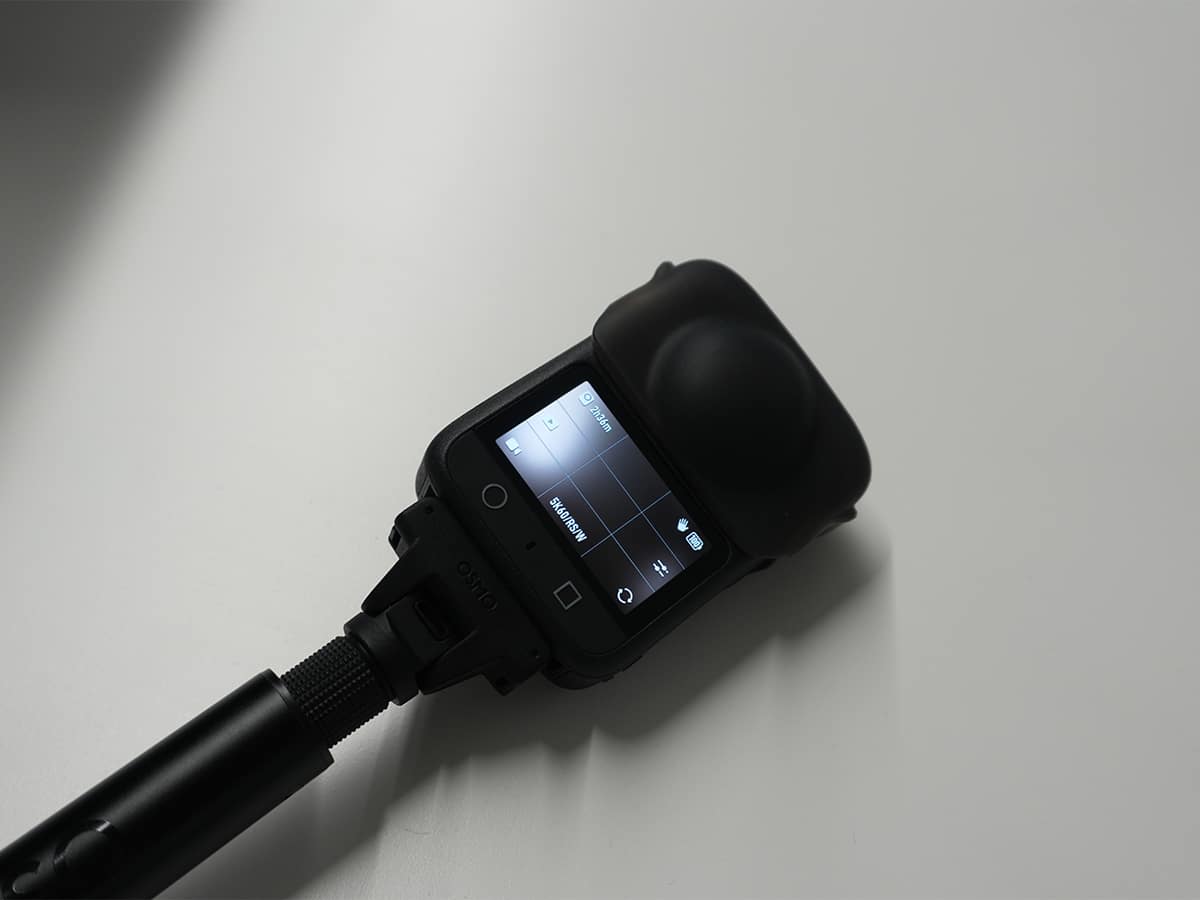
Should You Buy the DJI Osmo 360?
DJI delivers on its promise with the Osmo 360, creating an easy-to-use 360 camera that brings arguably the best image quality of any consumer 360 camera on the market.
The learning curve is small, the image quality is great, and the possibilities for what you can shoot are seemingly endless. I’ve only scratched the surface with my Osmo 360 test regime, but it’s been a great device so far. If anything changes in the meantime, you’ll be the first to know, and if you have any further questions, jump into the comments below, and we’ll answer them!
Should you buy the DJI Osmo 360? Well, if you’ve been sitting on the fence, wanting to jump into the deep end and purchase a 360 camera, and you’re already in the DJI ecosystem, then the Osmo 360 is a no-brainer. On the other hand, if you’re in the market for a 360 camera and you’re not loyal to any particular brand, the Osmo 360 has arrived at a very desirable price point, and it’s worth taking a closer look at.
NOTE: The author of this article, Ben McKimm, was provided a DJI Osmo 360 for the purposes of this review. All reviews remain independent and objective. For more information on how we test products, view our editorial guidelines here.








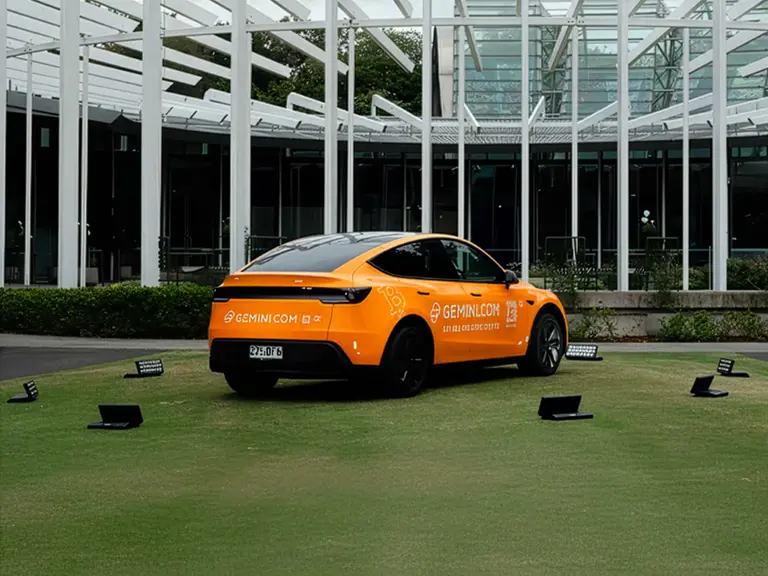









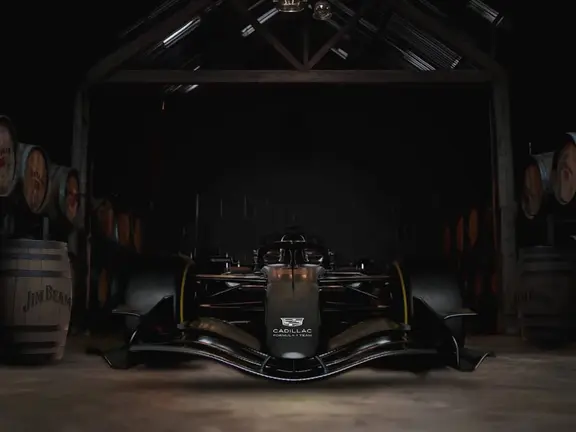





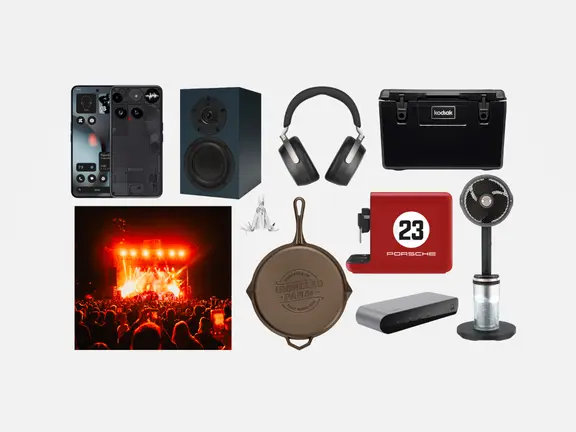




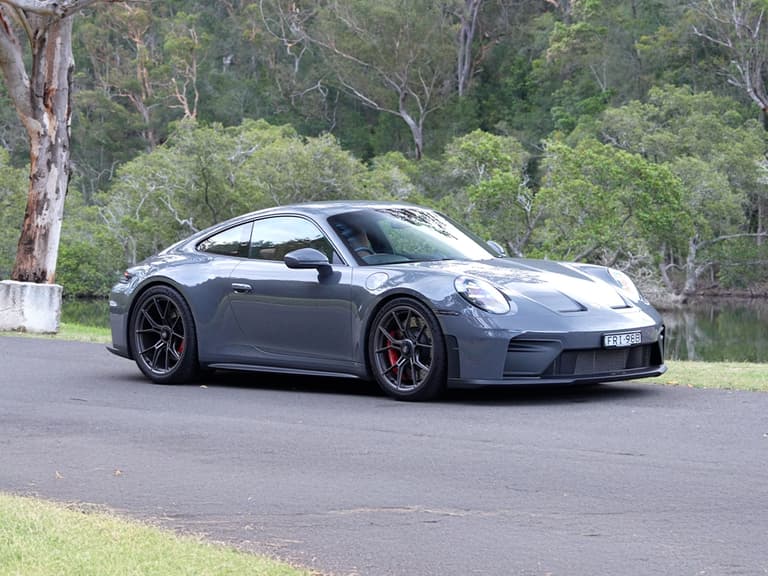


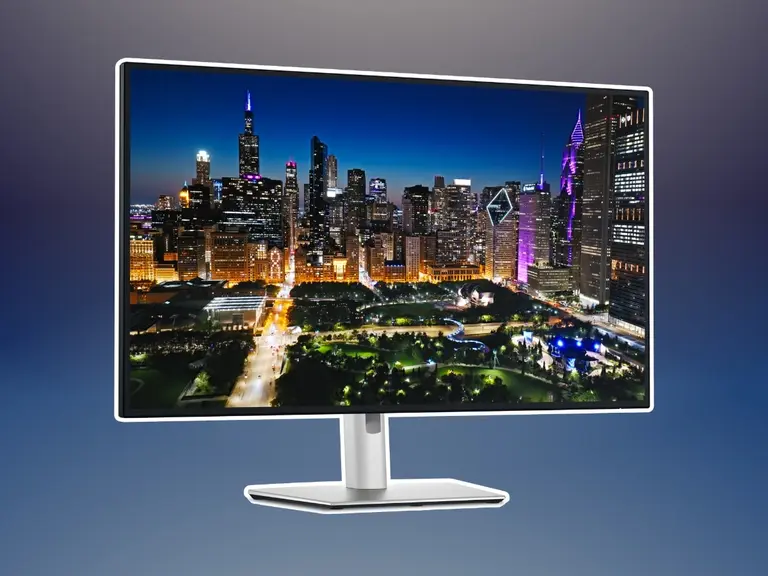

Comments
We love hearing from you. or to leave a comment.